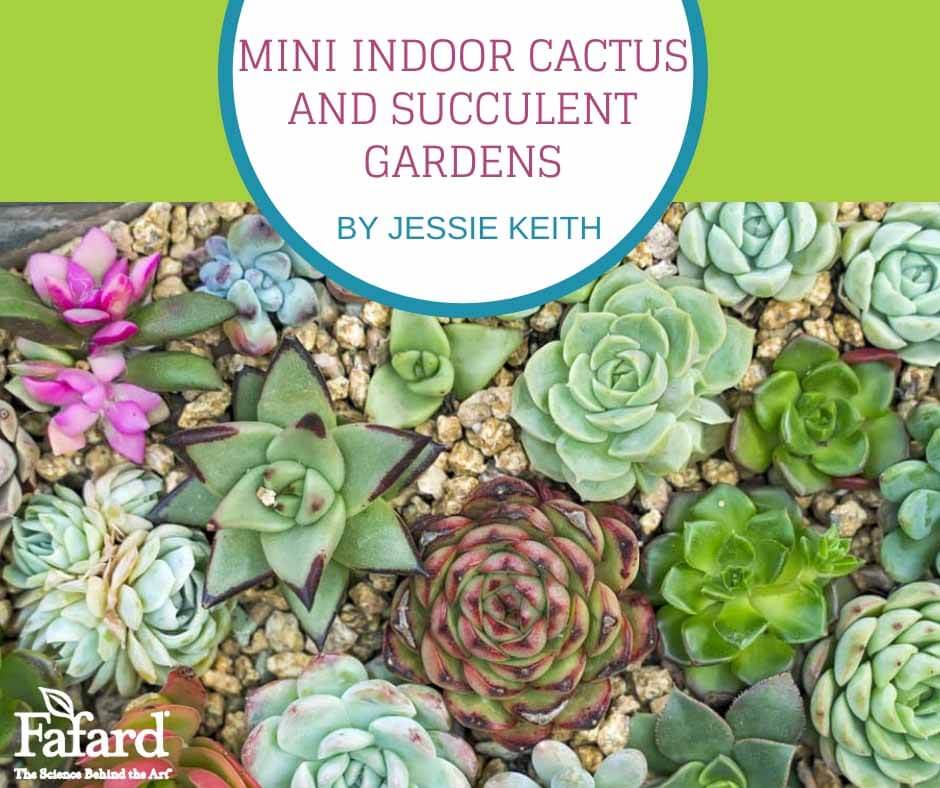

The beauty of succulent house plants is that they demand little attention. The beauty of little succulents is that they demand little space. When placed in an indoor terrarium or rock garden, they create quaint little easy-care landscapes to enjoy year-round.
Mini cacti and succulents are basically comprised of those that form rosettes, clumps, or gently spread/cascade. Just be sure that you know growth habits–final heights and widths–before creating your planting. Stay with small, slow-growers to avoid fast overgrowth. Some plants may be able to withstand close quarters, but overpacking your pots will eventually smother the least aggressive plants in the group.
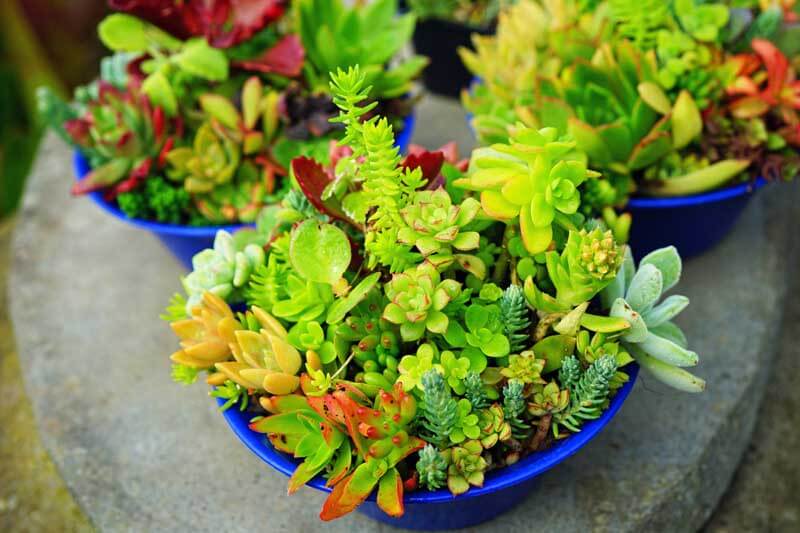
When designing your potted succulent garden, include little plants with varying shapes, habits, and colors. Play them against colorful pots, add pebbles, rocks, or shells for interest, and you’re set. You can also use rocks to create varying topographies within the pot to add drama and interest.
Because the design process requires that you know your plant palette, here are a few plants to consider to get your project started.
Some Miniature Succulents
Aloes
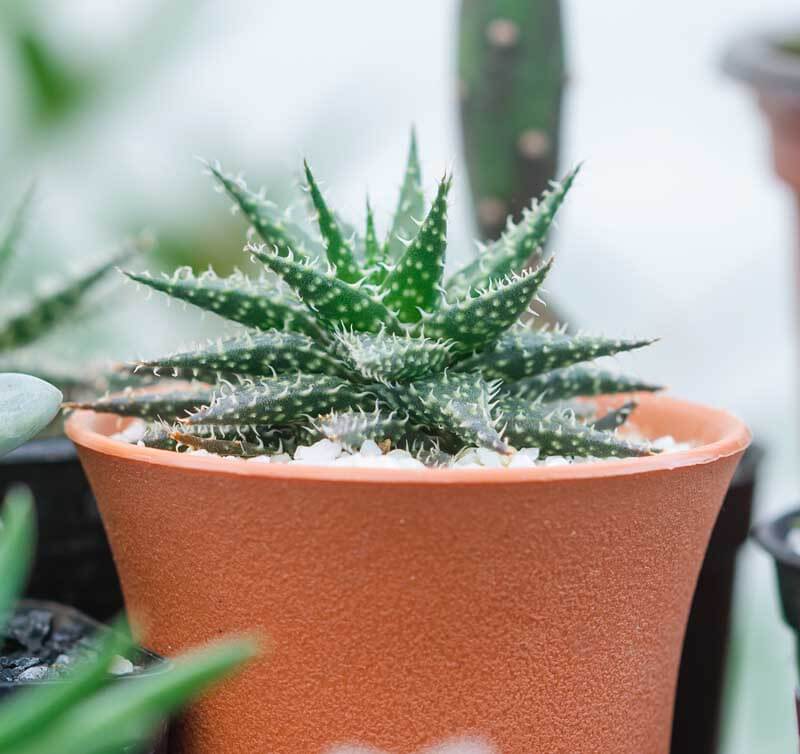
Some aloes are tiny, compared to the common Aloe vera and lack medicinally useful foliage. Aloes are known for their impressive red, coral, orange, or gold spikes of tubular flowers as well as their attractive clumps of foliage. Here are two good small ones that can be found at garden centers or online.
Lace aloe (Aloe aristata) is named for its dark rosettes of foliage decorated with lacy white edges and spots. It reaches just 3 to 5 inches high and 6 inches wide. If given good sunlight indoors, or brought outdoors in summer, it will produce stems of pendulous, coral-orange flowers in midsummer.
Little Gator Aloe™ (Aloe ‘Jimmy’) is a very tiny variety that reaches just 3 to 5 inches. It has silvery foliage with white markings. If provided good, consistent sunlight, it will produce a spike of Creamsicle-orange tubular flowers in summer.
Cacti
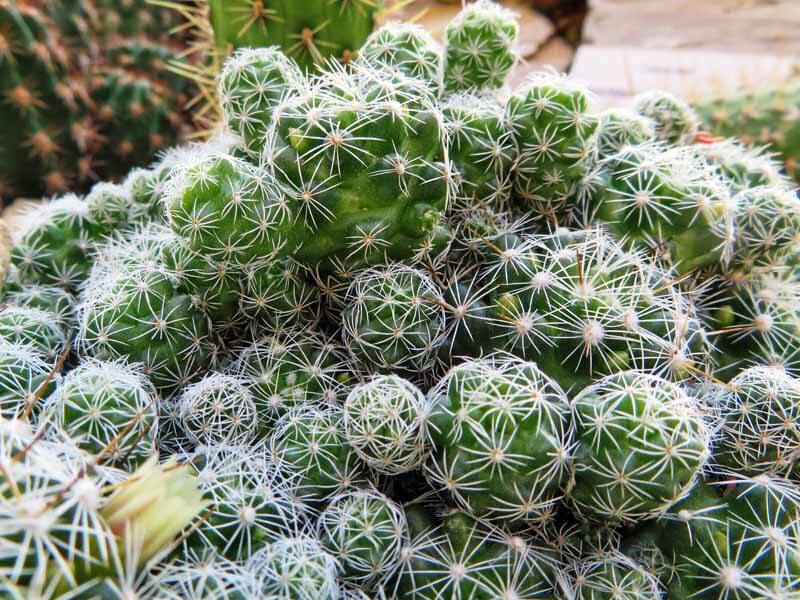
There are hundreds of very small cacti perfect for indoor potted landscapes. Types that are less prickly and/or bloom well inside are good choices.
One for all-round good looks is feather cactus (Mammillaria plumosa), which is tiny (to 4 inches), round, and covered with feathery white plumes that are finger-friendly (no spines). It is cuter than cute, reaches just 3 to 5 inches and produces yellowish-white flowers in spring. Over time, it will form a clumping mound.
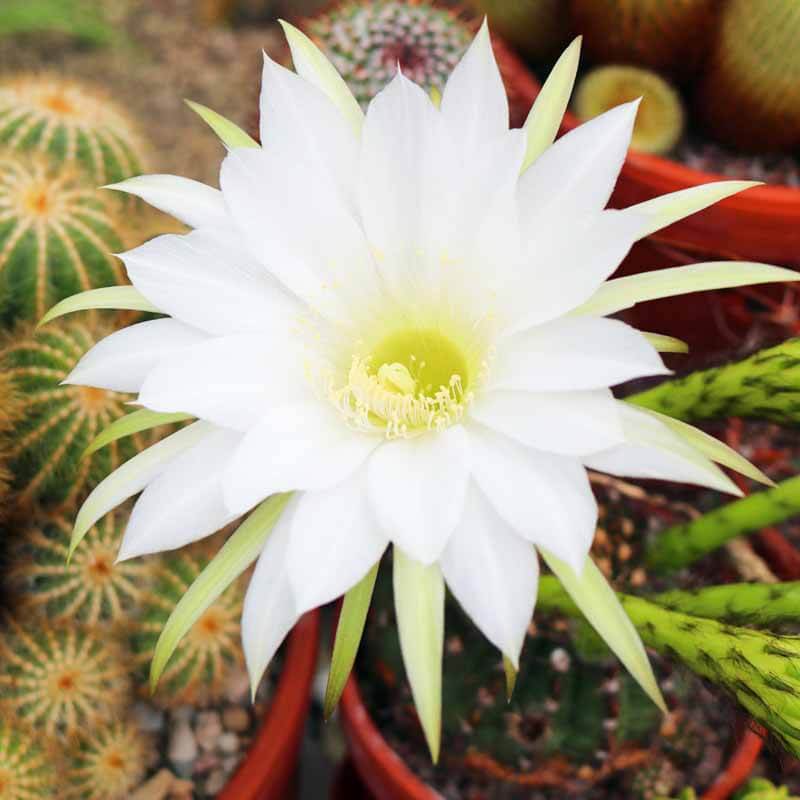
Small urchin cacti (various Echinopsis spp.) are also good bloomers, and the little Easter lily sea urchin cactus (E. subdenudata ‘Dominos’) is spectacular when in bloom. The plant stays between 3 and 4 inches high and looks like a green, ribbed sea urchin with sparse tufts of white spines. In spring or summer, huge, white tubular flowers are produced that are very fragrant and bloom at night. (In the wild they attract bat and moth pollinators.) The flowers can reach between 6 and 8 inches long!
A good one that’s just lightly prickly and very textural is the thimble cactus (Mammillaria gracilis var. fragilis). It creates a 2- to 4-inch high mound of many thimble-sized balls with few spines. In late winter, expect a flush of tiny, pale-yellow flowers that are as cute as the plant itself.
Crassulas
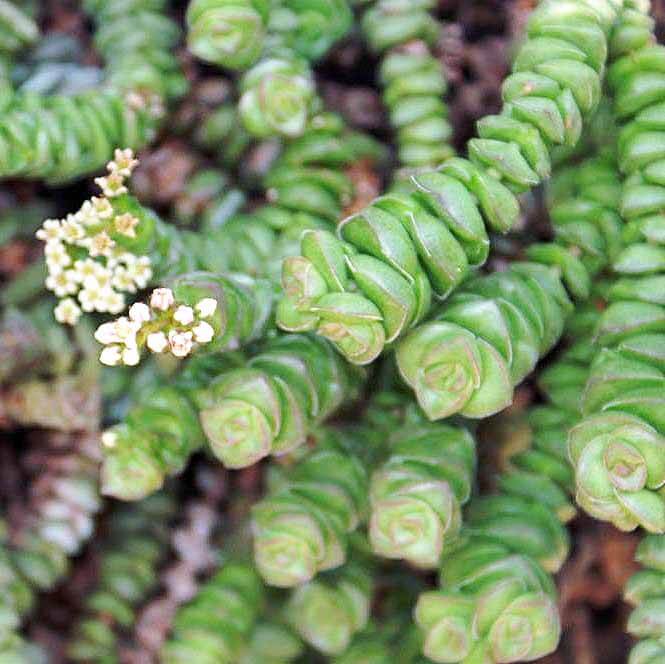
Lots of crassulas become quite large, like the common jade plant, but others are tiny and terrarium-worthy. Tom Thumb rosary vine (Crassula rupestris ssp. commutata ‘Tom Thumb’) is one. Its short chains of succulent leaves are bright green and edged in red. Expect it to reach between 6 to 8 inches long.
The impressive miniature spiral jade (Crassula ‘Estagnol’) is even smaller and more visually impressive. It has dense clusters of brilliant green leaves that spiral into beautiful patterns. The maximum height is just 3 to 5 inches. On occasion, it may produce small clusters of white flowers in the fall.
Haworthias
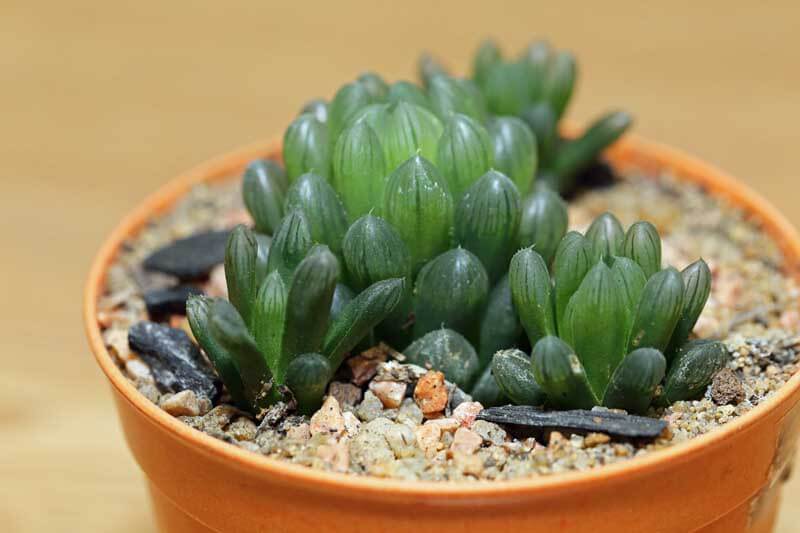
These popular little succulents are largely native to southern Africa, and there are lots of different varieties available. Some look like tiny aloes while others look more like little, rounded hens-n-chicks with translucent leaf markings. Sizes vary, but many stay compact.
Zebra plant (H. fasciata) is one that looks a bit like an aloe. It has dark spiky leaves with knobby white stripes and reaches just 3 to 4 inches high and 4 to 6 inches wide. The variety ‘Super White’ has extra bright stripes. Zebra plant almost never blooms indoors, but if it does, it puts forth delicate stems of white spring flowers.
Star window plant (H. cuspidata) and cathedral window plant (H. planifolia) are both squat, fat-leaved, and have variable, translucent markings at their leaf tips. Both are slow-growing with rosettes that reach 3 to 5 inches. Their flowers are comparable to those of zebra plant and equally uncommon in indoor specimens.
Senecio

There are several very cute succulent senecios, but most of them are aggressive spreaders. The small and bright mini blue chalk sticks (Senecio serpens ‘Mini Blue’) does spread, but slowly. It has slender, upright, dusty blue stems that reach 3 to 5 inches. Be sure to give it some room to roam.
Purchasing Mini Succulents
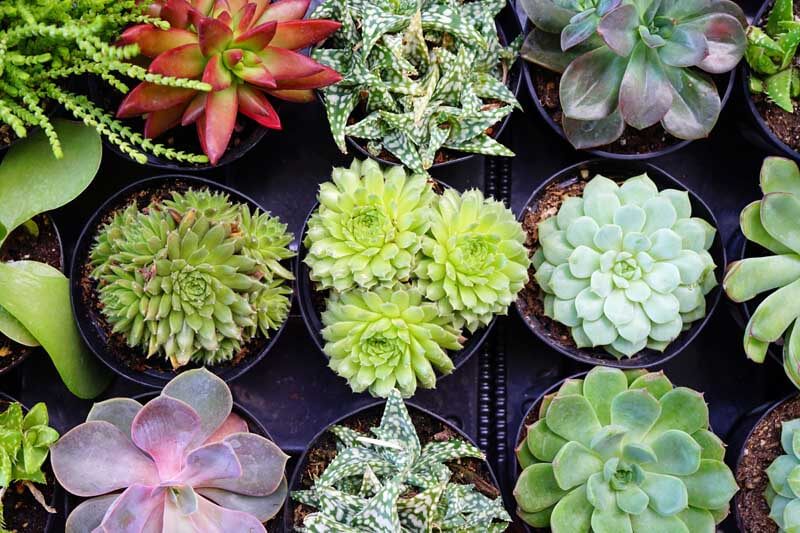
Visit any purveyor of succulents to discover lots of other interesting finds, but get informed before you make a purchase. Succulents sold in tiny pots don’t necessarily stay tiny. Some can become very large specimens, so check the plant tag for size parameters, and if the tag doesn’t say, then ask a staff person or look the plant up on your phone.
Mini Succulent Garden Preparation and Care
Start with the right pot and growing mix. Large planting bowls or bonsai pots look most impressive. These may be ceramic, plastic, or fiberglass. Be sure that they have good drainage and a watertight saucer below to catch excess water and protect table surfaces.
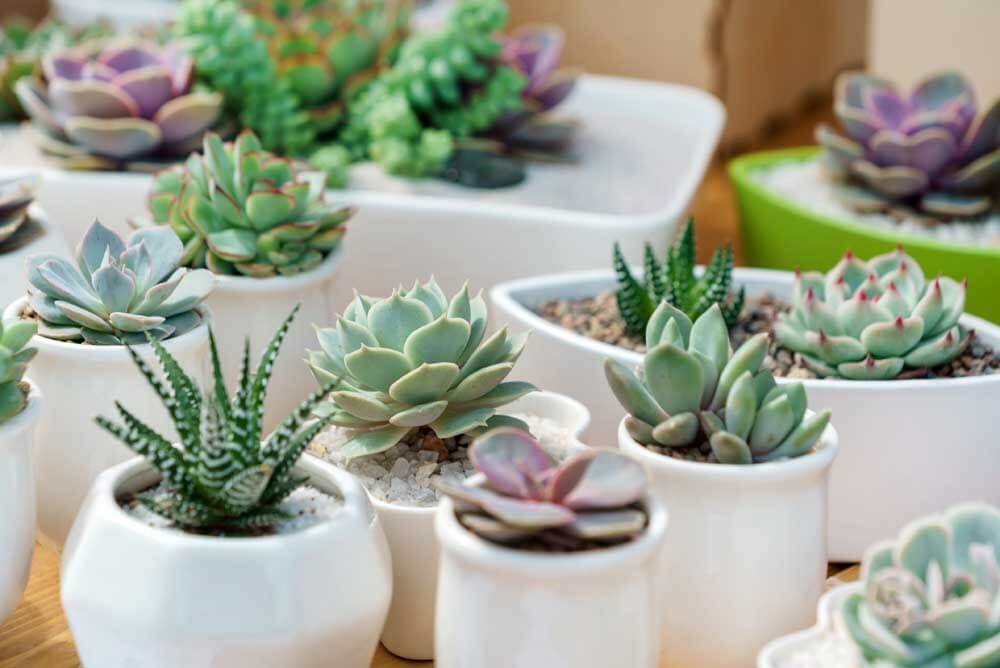
When it comes to potting mix, it must drain very well but also have some organic matter. A good recipe for succulents contains three parts Fafard Professional Potting Mix to one part perlite. The addition of crushed granite (Gran-i-Grit) is also recommended to add extra weight and increase drainage.
It’s also smart to top the soil with fine, decorative gravel to keep the surface dry and attractive. Pebbles and gravel for terrariums, potted plants, or fairy gardens come in different sizes, textures, and colors. Those in light or neutral shades let plants stand out without overstatement. A bold shell, geode, or another natural decorative element may also lend the final piece appeal and distinction.
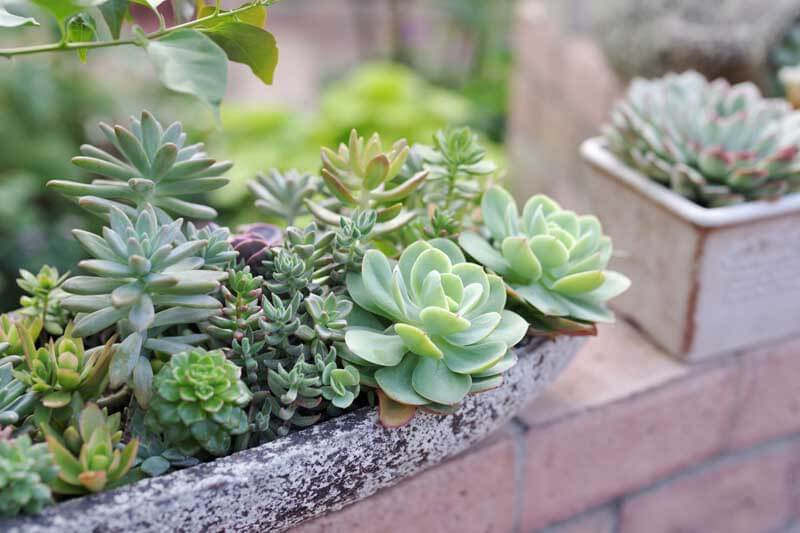
Grow your plantings in bright or indirect sunlight. A south-facing window or sunroom is ideal. Give them once-weekly water in summer and little water from late fall to winter. Even moderate watering in the winter months can cause cacti and succulents to rot. Taking your potted creations outdoors in summer will help with their overall growth and performance.
These little gardens take some time and investment to create but their beauty will reward you through the seasons. Give them good care and clip and divide them as needed, to keep them in bounds. Reserve any leftover pieces as welcome gifts to share with other plant-minded friends.

